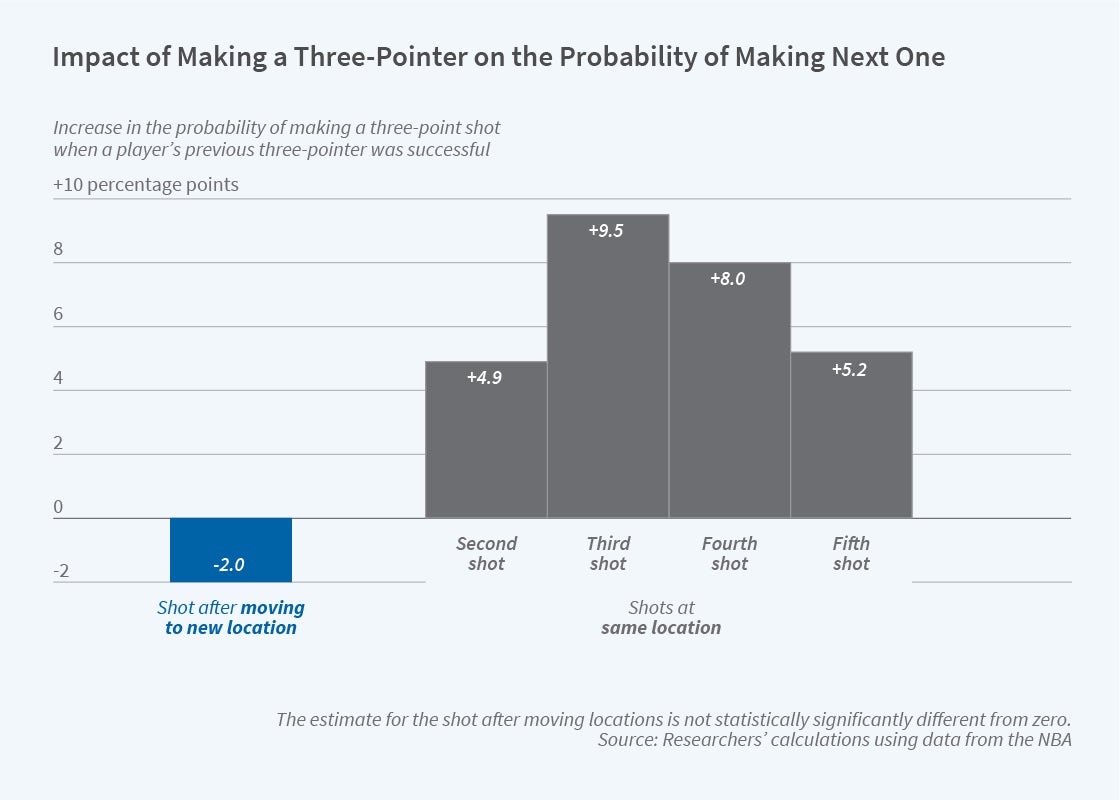Exploring the 'Hot Hand' in Basketball

In the NBA 3-Point Contest, a player who successfully makes a shot is more likely to make his next one when it is from the same location, but not otherwise.
When professional basketball players have a particularly successful game, hitting shot after shot, commentators often remark that they have a “hot hand.” The persistence of success, in basketball and other sports, has also attracted increasingly systematic study. In The Hot Hand in the NBA 3-Point Contest: The Importance of Location, Location, Location (NBER Working Paper 29468) Robert M. Lantis and Erik T. Nesson test for a “hot hand” by analyzing the performance of professional basketball players in the National Basketball Association (NBA) 3-Point Contest, in which players attempt 25 shots across five locations around the three-point line in one minute.
The researchers utilize data on 9,160 shots taken by players in contests between 1986 and 2019. Competitors in their sample made an average of 53 percent of the three-point shots they attempted. The researchers find a hot hand effect, but only when two consecutive shots are taken from the same shooting location. A successful shooting streak in another location does not increase a player’s probability of making his next shot when he moves to a new shooting position.
When all shots are analyzed together, players who make one shot are roughly 5 percentage points more likely to make their next one. But the researchers find that the effect of one shot on the next is completely attributable to a hot hand effect in the second through fifth shots that a player takes from a given location. The effect is largest for the third and fourth shots that a player takes from one place. For them, making the previous shot increases the probability of making the current one by 9.5 and 8 percentage points, respectively. This effect is also concentrated in the player’s last two shooting locations during the competition.
In contrast to the pattern when a player stays in the same spot on the court, making the last shot in a previous location decreases the probability of successfully making the first shot in the next location by 2 percentage points. There is no hot hand effect even when players move between locations that are the same distance from the basket.
The hot hand effect is more pronounced, meaning that the chance of making the next shot conditional on making the last is greater, when the player has hit a string of consecutive three-pointers. This pattern is also evident only when the player is shooting from a single location. A player making three consecutive shots in one location exhibits an 8.1 percentage point higher probability of making his next shot. However, if he makes two shots in a row but misses the next one, his fourth shot is no more likely to be successful than if he had missed all of the first three.
The researchers conclude that because players are unlikely to have many opportunities to take repeated shots from the same location in actual games, it is unlikely that there is a hot hand effect in that setting.
— Aaron Metheny


